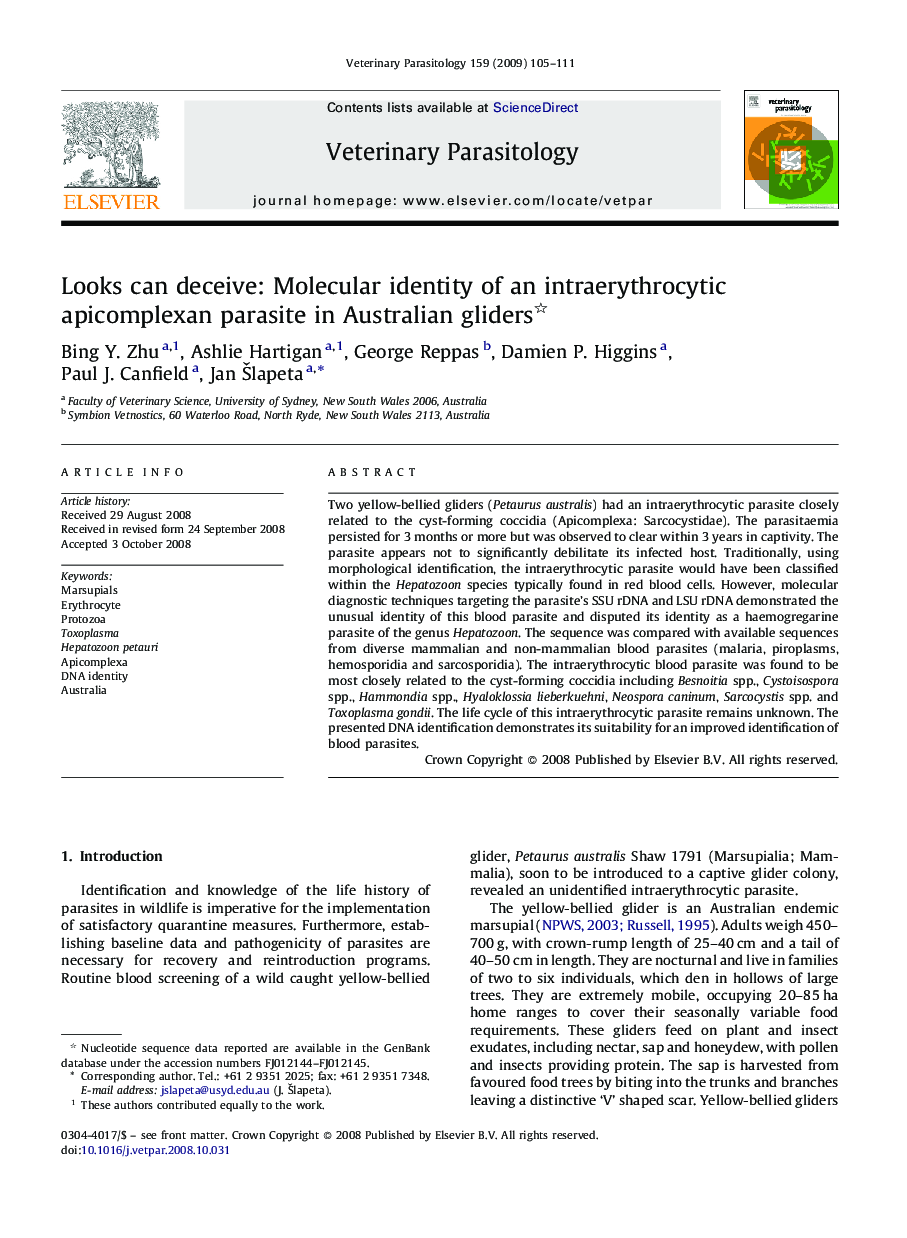| Article ID | Journal | Published Year | Pages | File Type |
|---|---|---|---|---|
| 2471330 | Veterinary Parasitology | 2009 | 7 Pages |
Two yellow-bellied gliders (Petaurus australis) had an intraerythrocytic parasite closely related to the cyst-forming coccidia (Apicomplexa: Sarcocystidae). The parasitaemia persisted for 3 months or more but was observed to clear within 3 years in captivity. The parasite appears not to significantly debilitate its infected host. Traditionally, using morphological identification, the intraerythrocytic parasite would have been classified within the Hepatozoon species typically found in red blood cells. However, molecular diagnostic techniques targeting the parasite's SSU rDNA and LSU rDNA demonstrated the unusual identity of this blood parasite and disputed its identity as a haemogregarine parasite of the genus Hepatozoon. The sequence was compared with available sequences from diverse mammalian and non-mammalian blood parasites (malaria, piroplasms, hemosporidia and sarcosporidia). The intraerythrocytic blood parasite was found to be most closely related to the cyst-forming coccidia including Besnoitia spp., Cystoisospora spp., Hammondia spp., Hyaloklossia lieberkuehni, Neospora caninum, Sarcocystis spp. and Toxoplasma gondii. The life cycle of this intraerythrocytic parasite remains unknown. The presented DNA identification demonstrates its suitability for an improved identification of blood parasites.
